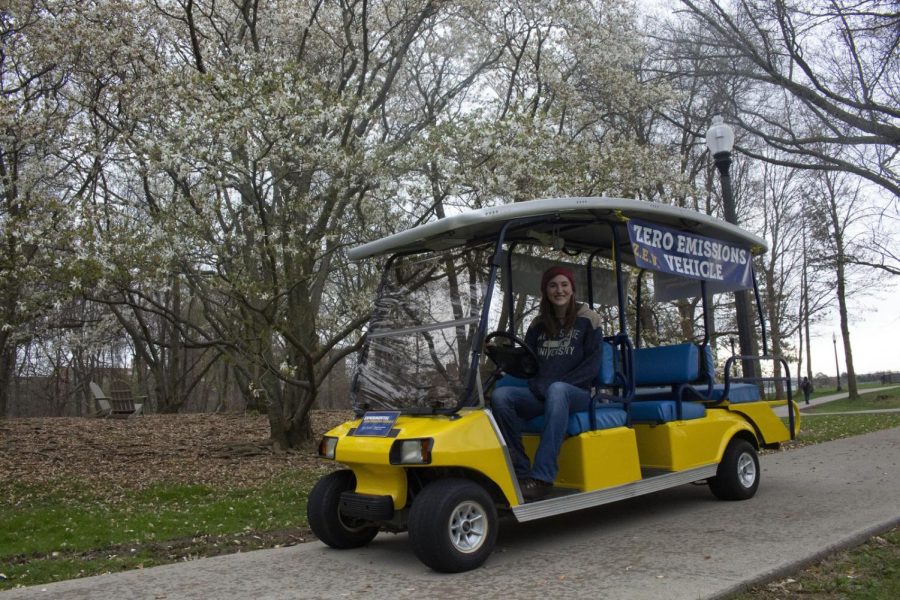Zero-emissions vehicle could lead to more sustainability on campus
Angela Deibel, a senior double majoring in marketing and engineering, sits in the zero emissions vehicle on Monday, April 22, 2019, near trees outside of Henderson Hall.
May 4, 2019
Many students get involved with research while at Kent State. Although some research one topic, Angela Deibel is someone who brings different fields together.
Deibel is a senior with a double major in marketing and engineering, and she is a member of the Clean Energy and Sustainability Research Team that created a zero-emissions vehicle from an old golf cart.
The vehicle is powered by fuel cells, sunlight and stored energy that is stored in a battery. Fuel cells are the main power source of the three. The vehicle gets its name from the process occurring in the cells to create the power.
“What happens is that you put hydrogen in one side and oxygen in the other, and they combine together to create H2O,” Deibel said. “And when they combine together, that creates a spark and we capture that as electricity. So during that process alone, there are zero emissions.”
The vehicle has many features, including a speaker, rows of seats and a small bed that can be used to carry items. All of these features allow the cart to be used in many different ways, which is what Deibel hopes to see now that it is finished.
Deibel said the team envisions various people and groups across the Kent State campus using the vehicle.
“We definitely would have to build a relationship with the club to let them use it, but it’s open. … We’re in that use phase, we’re in the consumer-use phase, and that’s what we want to work on,” she said.
With the vehicle completed, Yanhai Du, an associate professor in the College of Aeronautics and Engineering and the team leader of the Clean Energy and Sustainability Research Team, foresees further use of the fuel cells in the future.
Du said he wants to see the fuel cells power the laboratory and eventually power the Aeronautics and Technology Building, which houses the college.
Du said he hopes people learn from the project so they can begin creating a different idea of Kent State and what its students are capable of.
“We (want to) use this as a tool to demonstrate that a student can come to the university … so they can translate their knowledge that they learn and their own ideas into something useful,” he said.
Rachel Karas covers graduate education and research. Contact her at [email protected].












